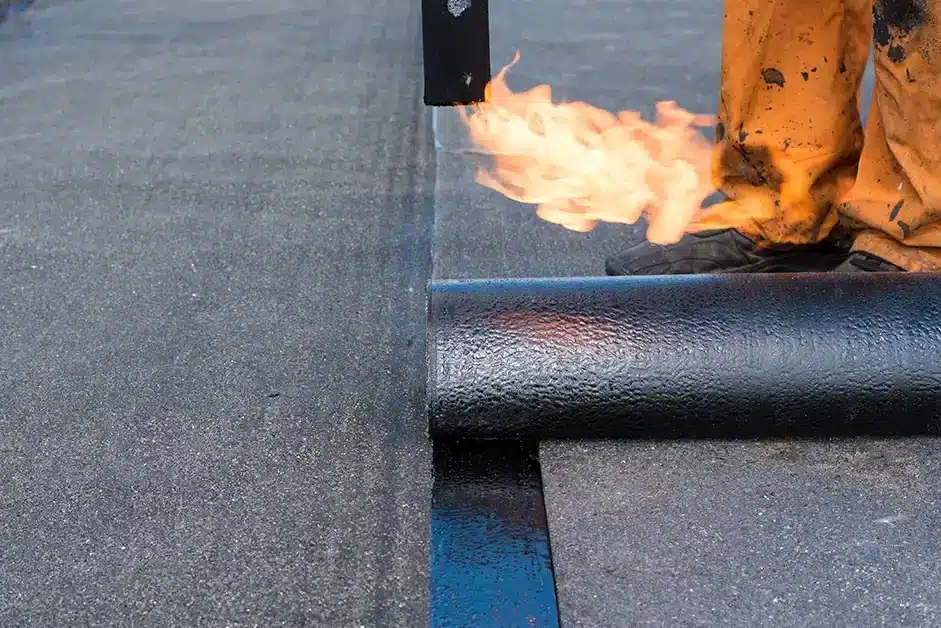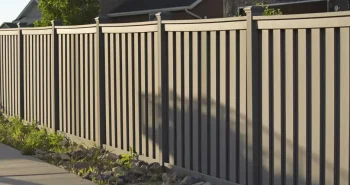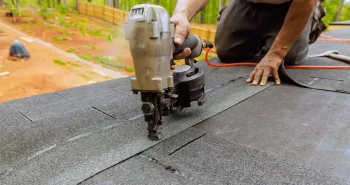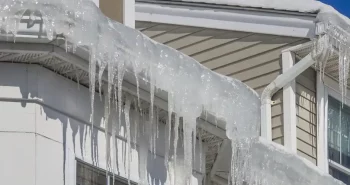Choosing the right type of roofing system for your commercial building is a critical decision that can impact longevity, maintenance costs, and energy efficiency. Each commercial roof type has its own advantages and disadvantages that may influence your decision to use it. Here, we uncover the different commercial roofing systems available alongside their unique characteristics, pros, and cons.
Types of Roofing for Your Commercial Building
Several types of roofs are used for commercial buildings, and their categorization depends on the overall pitch. For example, residential roofs typically have a higher pitch for aesthetic purposes, while commercial buildings tend to be on the flatter side. Still, depending on its purpose, some commercial properties benefit from a pitched roof. Before looking at the pros and cons of each type of commercial roofing system, it’s important to differentiate between them. The three primary categories are flat, low-sloped, and pitched roofs.
Commercial Flat Roofing Systems
Although the name suggests this type of roof is completely flat, it’s not. A very, very slight slope exists so that water doesn’t pool on the surface. Still, the slope is extremely small and hard for an untrained eye to notice. This is one of the most common types of commercial roofs, especially for industrial businesses.
Flat roofing materials and membranes typically include things like:
Modified Bitumen — a roofing membrane consisting of asphalt and modifiers, providing enhanced flexibility and strength for flat roofs.
Thermoplastic Polyolefin (TPO) — a single-ply roofing membrane known for its heat-welded seams, UV resistance, and energy efficiency, commonly used in commercial applications.
Polyvinyl Chloride (PVC) — a single-ply roofing membrane offering durability, chemical resistance, and fire retardancy, ideal for flat roofs in various climates.
Built-Up Roofing (BUR) — multiple layers of bitumen and reinforcing fabrics like fiberglass or polyester, which offers a long-lasting solution for flat roofs.
Ethylene Propylene Diene Monomer (EDPM) — a synthetic rubber roofing membrane favored for its durability, flexibility, and resistance to weathering.
Metal Roofs — using materials like steel, aluminum, or copper, metal roofs offer durability, longevity, and aesthetic versatility, often used in both residential and commercial settings for flat roofs.
Advantages of Flat Commercial Roofs
One of the biggest benefits of flat roof types is its affordability. Since there’s no slope, fewer materials are used compared to pitched roofs. However, this depends on which types of commercial roofing materials you choose. For example, if you want to install metal roofing on your commercial building, you could incur a higher price than TPO or PVC. While there are advantages to a metal roof, it may not be the ideal choice for commercial buildings looking to minimize cost.
Flat commercial roofs are also easy and fast to install. This benefits both building owners and roofing contractors, as it minimizes disruptions to business and gives contractors more time to take on other work. When installing a new commercial roof takes too long, it can lead to noise and hazardous conditions that aren’t conducive to sales.
After the roof replacement or new installation is complete, property owners can enjoy easy maintenance without putting anyone at risk for slips or falls. However, it’s still best to partner with a professional for roofing services like repairs, maintenance, and cleaning to maximize safety.
Finally, a flat roof offers a greater surface area for external devices like air conditioning and heating. Businesses can also easily install satellite dishes or adjustable solar panels on top of flat roofs.
Disadvantages of Flat Commercial Roofs
The biggest disadvantage of using a flat roof is the lack of adequate drainage. Every type of commercial roofing needs to be able to drain water off and away from the foundation, but flat roofs aren’t designed to do that efficiently. However, you can install an internal drainage system to combat these issues, which can keep your property in good condition and extend the lifespan of your roof.
If you decide to take this route, the roofing materials used must be waterproof or have a waterproof membrane applied. This can help reduce the risk of interior and exterior water damage that could affect the structural stability of your property.
Another drawback to having a flat roof on your commercial property is its susceptibility to snow and ice damage. Snow can easily fall off roofs with a pitch, but it will just continue to pile up on a flat roof, so you’ll need to remove it manually to avoid any problems with weight disruption.
Low-Sloped Commercial Roofing Systems
Low-sloped commercial is when the surface has a slope of less than three inches per foot. This means that, for every horizontal foot, the vertical incline is less than three inches. By this definition, flat roofs could be seen as a low slope, but for pros and cons purposes, we’ll differentiate the two. These are typically used on commercial buildings like apartment buildings, factories, warehouses, industrial buildings, etc.
Flat and low-sloped roofs often use the same materials and membranes, which, as mentioned, include:
Modified Bitumen
Thermoplastic Polyolefin (TPO)
Polyvinyl Chloride (PVC)
Built-Up Roofing (BUR)
Ethylene Propylene Diene Monomer (EDPM)
Metal Roofs
Advantages of Low-Sloped Roofs
Since low-sloped roofs are similar to flat ones, they have the same advantages. They’re also fairly easy to install and have a fast turnaround time. They’re affordable and safer to work on, making them less expensive than pitched roofs.
Compared to flat roofs, low-sloped roofing today tends to have a pitch that allows for some improvements in drainage. The slight elevation can help channel water down and away from your building, using statically placed valleys and drains. The type of material you can use for these commercial roofs varies, and if you’re not sure which option is best, speak to an experienced roofing contractor.
Disadvantages of Low-Sloped Roofs
Although slightly better with drainage, low-sloped roofs still face potential snow and ice buildup issues. Typically, if you live in a region with harsh winters, you’ll need to adhere to strict building codes and maintenance to reduce potential problems during colder months.
Pitched Commercial Roofing Systems
Although less common, commercial and industrial roofing can also be pitched. This is when the slope is higher than three inches per foot, but it can also be more extreme, like in residential buildings. As a building owner, it’s important to speak with a professional roofing contractor about the degree of pitch, as sometimes it’s not an ideal roofing solution. Still, it’s good to weigh the advantages and disadvantages they provide.
Advantages of Pitched Roofs
Pitched roofs have the best built-in drainage system of any option, so you won’t have to worry about water damage, mold, or mildew. Over time, this helps reduce the need for repairs or maintenance, saving you money.
Disadvantages of Commercial Roofing with a High Pitch
However, pitched roofs require more materials and can be more dangerous to install, so the price increases. The installation process is more complex and requires measures that flat roofs don’t need.
Pitched roofs are also more difficult to repair. It can even be more difficult to see potential roofing damage, as you’ll need to make inspections from the ground. Scheduling a yearly commercial roof inspection can help and is recommended. Still, if any repairs need to be done, they can be a bit more expensive due to safety risks and accessibility.
Pros and Cons of Different Roof Materials
Different commercial roofing materials also have unique advantages and disadvantages. Which membrane you’ll use will typically depend on the roof style or structure, location, and commercial property type you own. It may also depend on the overall roof area and potential budgeting constraints. You can read more about the different options for commercial properties here.
Finding a Professional for Your Commercial Roofing Project
While flat roofs are easier to install, they should still be done by an experienced commercial roofing contractor. First Star Exteriors employs a team of reputable roofing contractors to help with your commercial property. As one of the region’s leading roofing companies, our team knows how to avoid bad roofing jobs. We take pride in roofing installation skills and are here to help ensure you get the most out of your structure for years. Our skilled contractors understand how to determine what materials will work best for your budget and vision. They also know what it takes to install a new roof on a commercial property to maximize performance, aesthetics, and longevity.
When you’re ready to get started on your new commercial roof installation or replacement, contact First Star Exteriors. We believe there’s a perfect balance between hands-on, personable treatment, quality of work, and speed of delivery. The roofing contractors at First Star Exteriors always take the time to understand your needs and communicate effectively from the first quote to the last nail placed. To learn more about our commercial and residential roofing options or to get a quote from us today within 48 hours, contact us at (479) 267-4800 or fill out our contact form.





